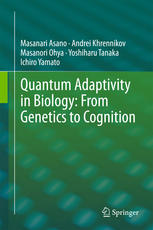

Most ebook files are in PDF format, so you can easily read them using various software such as Foxit Reader or directly on the Google Chrome browser.
Some ebook files are released by publishers in other formats such as .awz, .mobi, .epub, .fb2, etc. You may need to install specific software to read these formats on mobile/PC, such as Calibre.
Please read the tutorial at this link: https://ebookbell.com/faq
We offer FREE conversion to the popular formats you request; however, this may take some time. Therefore, right after payment, please email us, and we will try to provide the service as quickly as possible.
For some exceptional file formats or broken links (if any), please refrain from opening any disputes. Instead, email us first, and we will try to assist within a maximum of 6 hours.
EbookBell Team

5.0
88 reviewsThis book examines information processing performed by bio-systems at all scales: from genomes, cells and proteins to cognitive and even social systems. It introduces a theoretical/conceptual principle based on quantum information and non-Kolmogorov probability theory to explain information processing phenomena in biology as a whole.
The book begins with an introduction followed by two chapters devoted to fundamentals, one covering classical and quantum probability, which also contains a brief introduction to quantum formalism, and another on an information approach to molecular biology, genetics and epigenetics. It then goes on to examine adaptive dynamics, including applications to biology, and non-Kolmogorov probability theory.
Next, the book discusses the possibility to apply the quantum formalism to model biological evolution, especially at the cellular level: genetic and epigenetic evolutions. It also presents a model of the epigenetic cellular evolution based on the mathematical formalism of open quantum systems. The last two chapters of the book explore foundational problems of quantum mechanics and demonstrate the power of usage of positive operator valued measures (POVMs) in biological science.
This book will appeal to a diverse group of readers including experts in biology, cognitive science, decision making, sociology, psychology, and physics; mathematicians working on problems of quantum probability and information and researchers in quantum foundations.